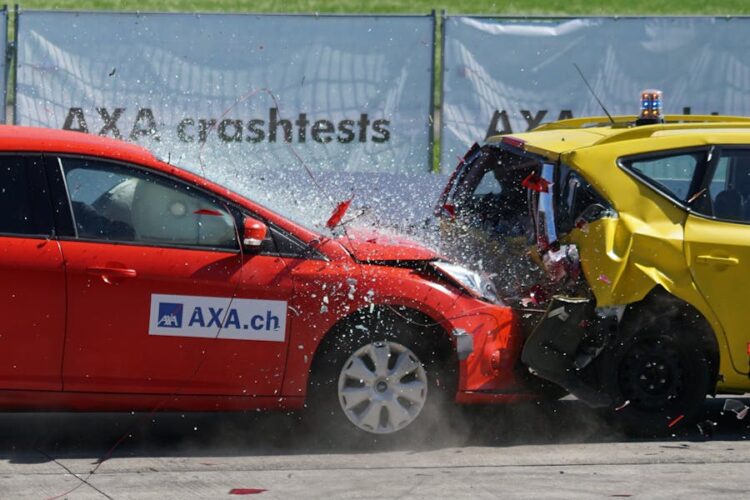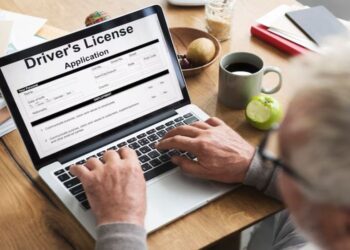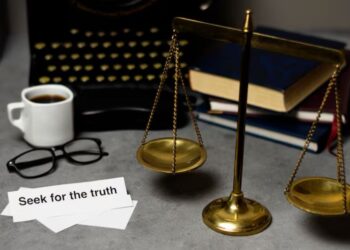A car accident can be jarring and puzzling. Besides anything else, the major concern following a car crash is whose fault it was.
Understanding how fault is determined is crucial because everything from insurance claims to potential legal actions is affected.
The following guide will explain in detail how fault is established, what happens if both parties have a fault, and how the laws on negligence impact these decisions. Make sure you read to the end to gain more expert knowledge on the matter.
Why Determining Fault in a Car Accident is Important
If you’ve been involved in a car accident, you’d normally ask yourself many questions, including, “Who caused the crash?”.
It is much more than a question of blame, as the answer to this question may affect how damages are payable. Insurance companies look toward fault to determine who pays financially for repairs, medical bills, and other damages.
Being at fault will surely increase your premiums. More serious cases also include legal liability, especially if the accident causes great injury or property damage. This is why you must contact a car accident attorney immediately when you are involved in a car accident.
The Process of Determining Fault in a Car Accident
Determining fault after a car accident generally involves multiple parties. Here is how it usually works:
1. The Driver Involved
After the accident, the drivers have to take their take on what happened. They would exchange insurance information and, if possible, try to talk about how the crash happened.
Though imperative, the drivers may not wholly agree at this point as to who was the cause of the accident.
2. Insurance Companies
At this point, when a claim is filed, an investigation is initiated by your insurance company. The adjusters will investigate the police report, photos, videos, and any other evidence presented to them to determine fault.
Insurance companies often directly communicate with each other on such matters and can sometimes make these determinations themselves.
3. Arbitration or Jury Decisions
Where either insurance companies or drivers cannot agree upon the liability issue, the case may be taken for arbitration or trial in court.
In arbitration, the fault is awarded by a neutral third-party arbitrator. If it goes to trial in court, both sides will introduce their version, and a jury will determine who is liable.
4. Eyewitness Accounts
If anyone witnessed the accident happen, then their testimony is critical. Witnesses are considered neutral and can accurately relate what happened. They are often the deciding factor when conflicting reports arise between drivers.
5. Traffic Camera Footage
In some locations, traffic cameras may fully capture the accident. Video evidence is highly reliable because it shows what took place without bias. With the footage, insurance companies or courts can quickly determine fault.
6. Analysis of Vehicle Damages
For instance, all one has to do is look at the damage to the vehicle: in a typical rear collision, the driver at the back is blamed.
Specialists may handle the damages to make an accident reconstruction and give an opinion on how the accident happened.
7. Police Report
The police generally show up at accident scenes, especially serious ones. They examine whether the accident occurred, what statements anyone involved made, and any physical evidence, such as skid marks or how the vehicle was positioned.
The police report may include an opinion as to who was at fault. This is what insurance companies may use when dealing with claims.
What Do Police Reports Contain?
A typical police report will include preliminary information regarding the accident:
- Names and contact information of drivers involved
- Descriptions of cars and license plate numbers
- Summary of what happened before the accident
- Witness statements
- Citations or arrests made
It can also include road conditions, weather, and even physical evidence such as skid marks or debris. Officers often include diagrams or sketches of the scene to give an idea of how it happened.
Limitations of Police Reports in Fault Determination
While it is useful, police reports are not infallible. Officers often arrive well after the accident and sometimes must rely on one of the parties involved to explain what happened.
Sometimes, this leads to inaccuracies in the police report. Police reports rarely cover everything in detail and sometimes don’t account for all contributing elements.
Insurance companies and courts often use a variety of sources to determine liability, in addition to the police report alone.
Overview of Fault and No-Fault States
Laws of fault are not uniform in the U.S. but depend on where an accident occurs. For this, it comes in two forms: fault and no-fault states.
1. Fault States
In fault states, the driver at fault was liable for the damages.
The insurance company will be responsible for determining the fault, and the party with the fault shall have his/her insurance handle the costs.
When the driver has less than enough insurance in his or her policy, the injured party can sue the driver in court to receive extra compensation.
2. No-Fault States
In no-fault states, the drivers’ insurance coverage covers their damages irrespective of who is at fault.
The whole idea behind this system is that it will limit litigation by necessitating this complex claims determination process.
However, drivers can also file a case against the other party if they cause grave injury or extensive property damage.
Knowing whether you live in a no-fault or fault state means a lot. That will, in fact, determine exactly how claims are going to be filed and whether legal action will be available.
What if Both Sides Are at Fault in an Accident?
Not all accidents are clear-cut. Sometimes, both drivers share a little of the blame for the crash.
When that is the case, the fault for the accident is apportioned among the parties according to a determination of their respective negligent conduct that contributed to the injury.
That is where contributory and comparative negligence laws come in. While these laws contribute to distinguish shared fault, they differ based on the states.
1. Contributory Negligence
Even when one is 1% at fault, they cannot recover compensation from the other party in states that enforce contributory negligence. Some states have strict rules, and drivers can rarely get compensation unless they are blameless.
2. Comparative Negligence
Most states now follow some form of comparative negligence. In other words, whatever the percentage of fault, one party is assessed against another. If you have 20% at fault, you can recover 80% of the damages.
Comparative negligence is categorized into:
- Modified comparative negligence, where you cannot get any compensation if you are more than 50 percent at fault. At fault of below 50 percent, can still get you some compensation.
- Pure comparative negligence. Here, you’ll recover damages regardless of the amount of fault you share. But there’s a catch. The amount of damages payable will be reduced by your fault percentage.
Conclusion
Determining fault after a car accident can be rather complicated, involves many facets, and requires at least police reports, witness statements, and traffic laws.
Understanding how fault is determined can help you better navigate with confidence your next steps after an accident, regardless of whether your state is a fault or no-fault state.
Contributory and comparative negligence laws control how damages can be rewarded when both parties may be considered ‘at fault’. Specific research in your state, and document everything possible if this would occur.
Understanding the process will help in the protection of your rights and see you pay no more than your fair share in case of an accident.










